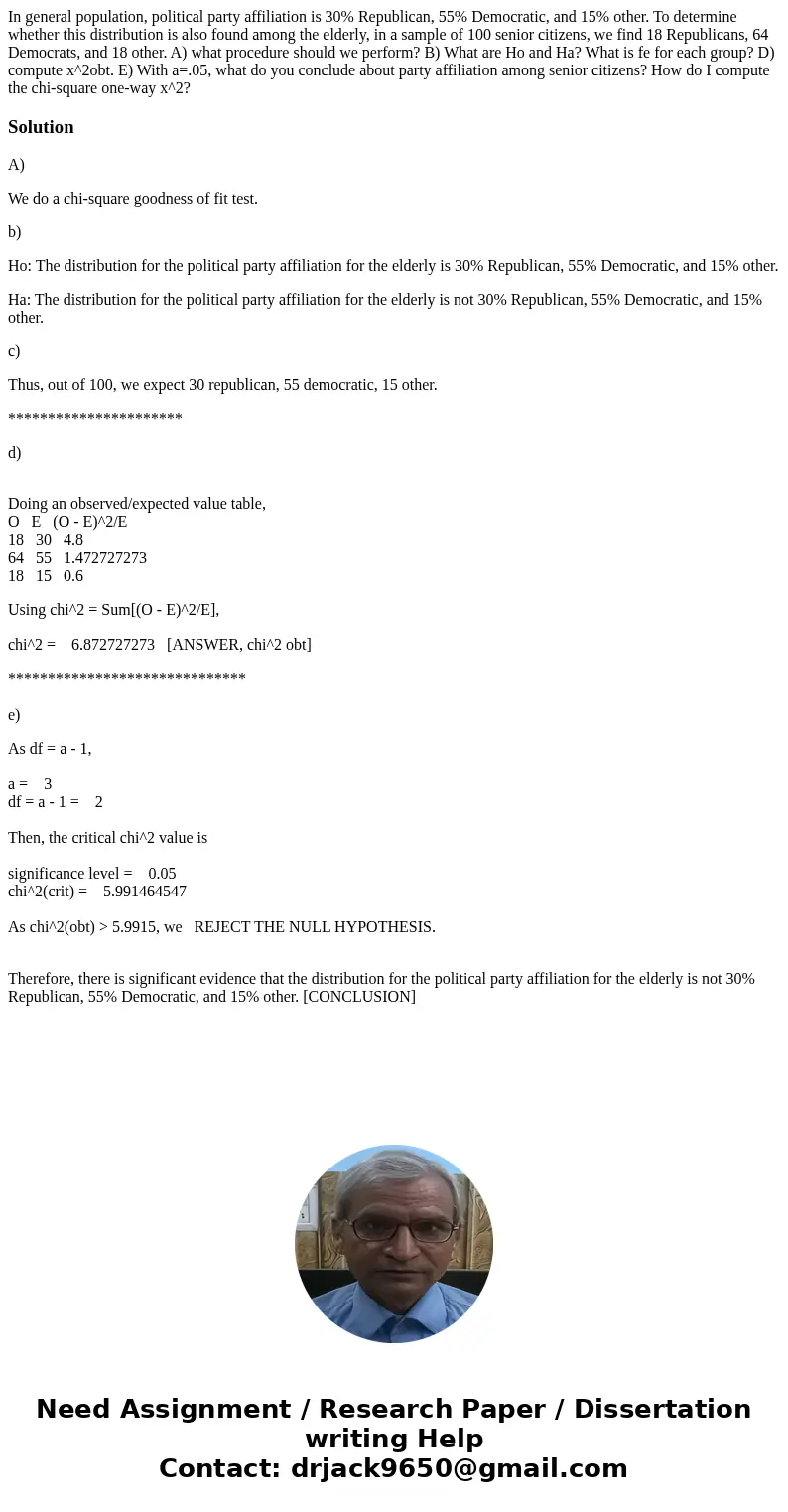In general population political party affiliation is 30 Repu
In general population, political party affiliation is 30% Republican, 55% Democratic, and 15% other. To determine whether this distribution is also found among the elderly, in a sample of 100 senior citizens, we find 18 Republicans, 64 Democrats, and 18 other. A) what procedure should we perform? B) What are Ho and Ha? What is fe for each group? D) compute x^2obt. E) With a=.05, what do you conclude about party affiliation among senior citizens? How do I compute the chi-square one-way x^2?
Solution
A)
We do a chi-square goodness of fit test.
b)
Ho: The distribution for the political party affiliation for the elderly is 30% Republican, 55% Democratic, and 15% other.
Ha: The distribution for the political party affiliation for the elderly is not 30% Republican, 55% Democratic, and 15% other.
c)
Thus, out of 100, we expect 30 republican, 55 democratic, 15 other.
**********************
d)
Doing an observed/expected value table,
O E (O - E)^2/E
18 30 4.8
64 55 1.472727273
18 15 0.6
Using chi^2 = Sum[(O - E)^2/E],
chi^2 = 6.872727273 [ANSWER, chi^2 obt]
******************************
e)
As df = a - 1,
a = 3
df = a - 1 = 2
Then, the critical chi^2 value is
significance level = 0.05
chi^2(crit) = 5.991464547
As chi^2(obt) > 5.9915, we REJECT THE NULL HYPOTHESIS.
Therefore, there is significant evidence that the distribution for the political party affiliation for the elderly is not 30% Republican, 55% Democratic, and 15% other. [CONCLUSION]

 Homework Sourse
Homework Sourse